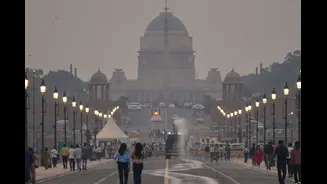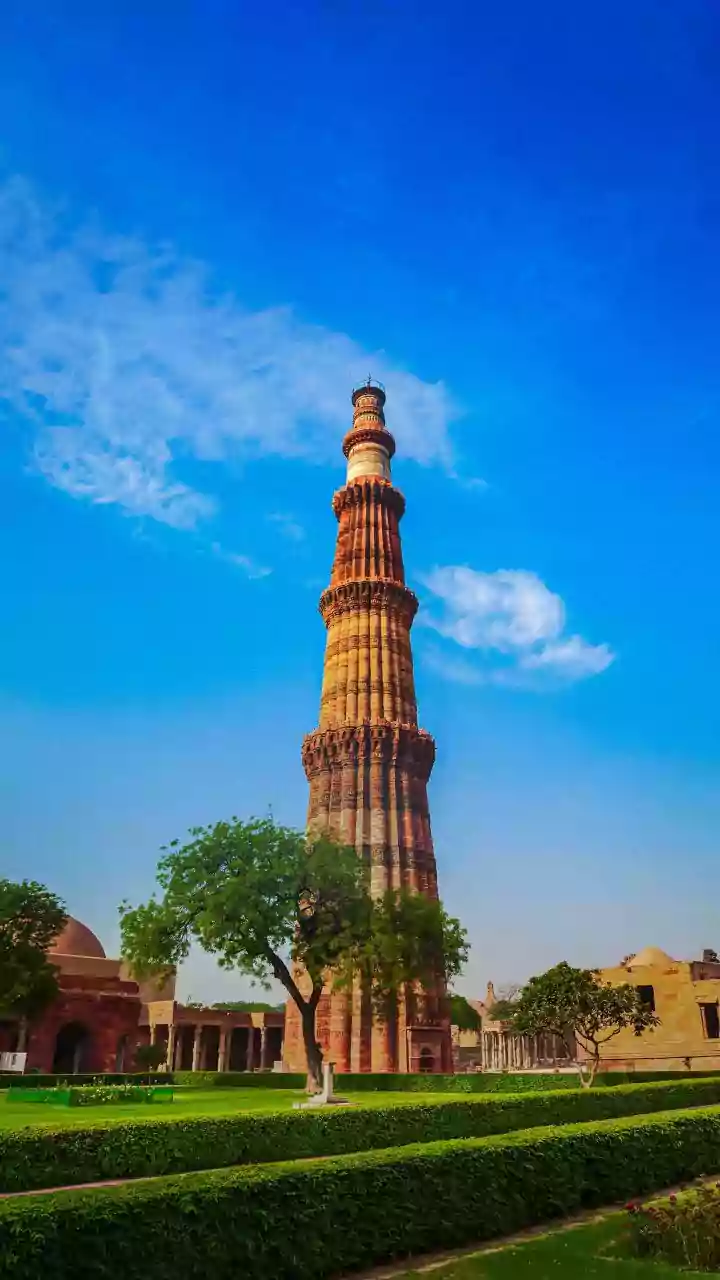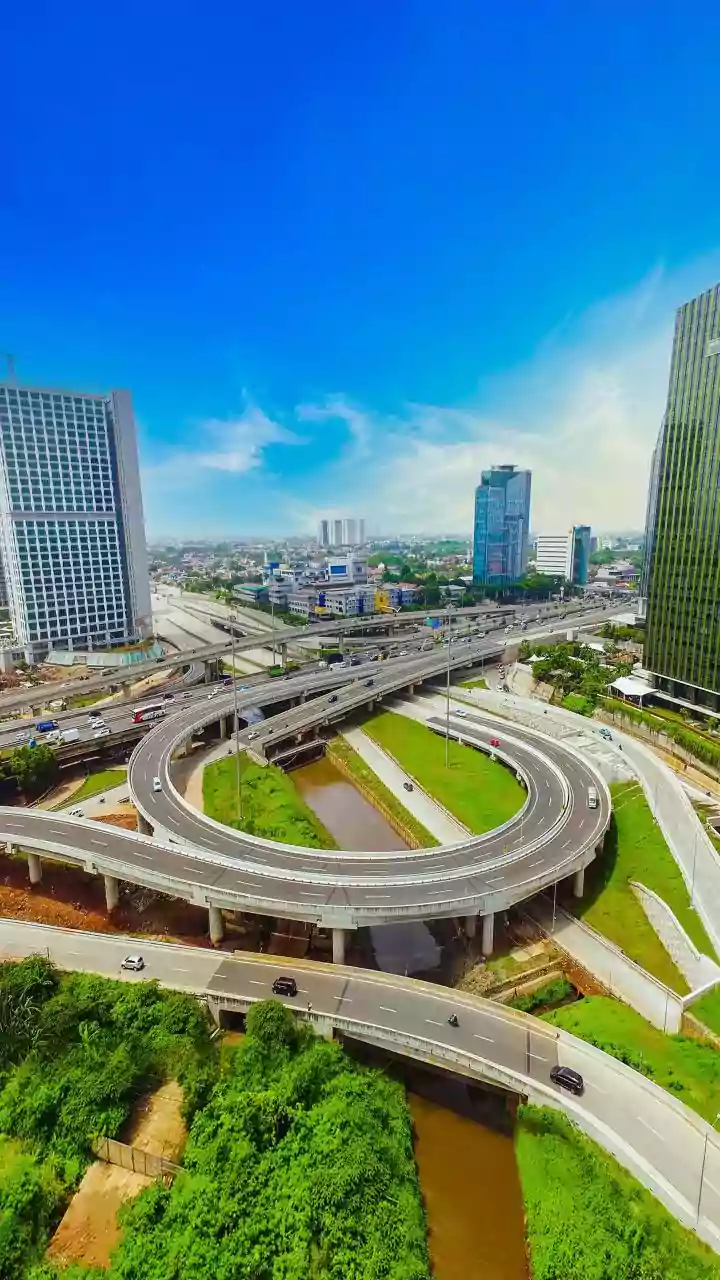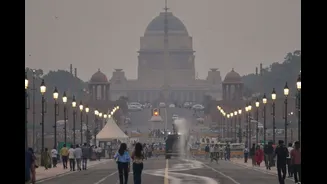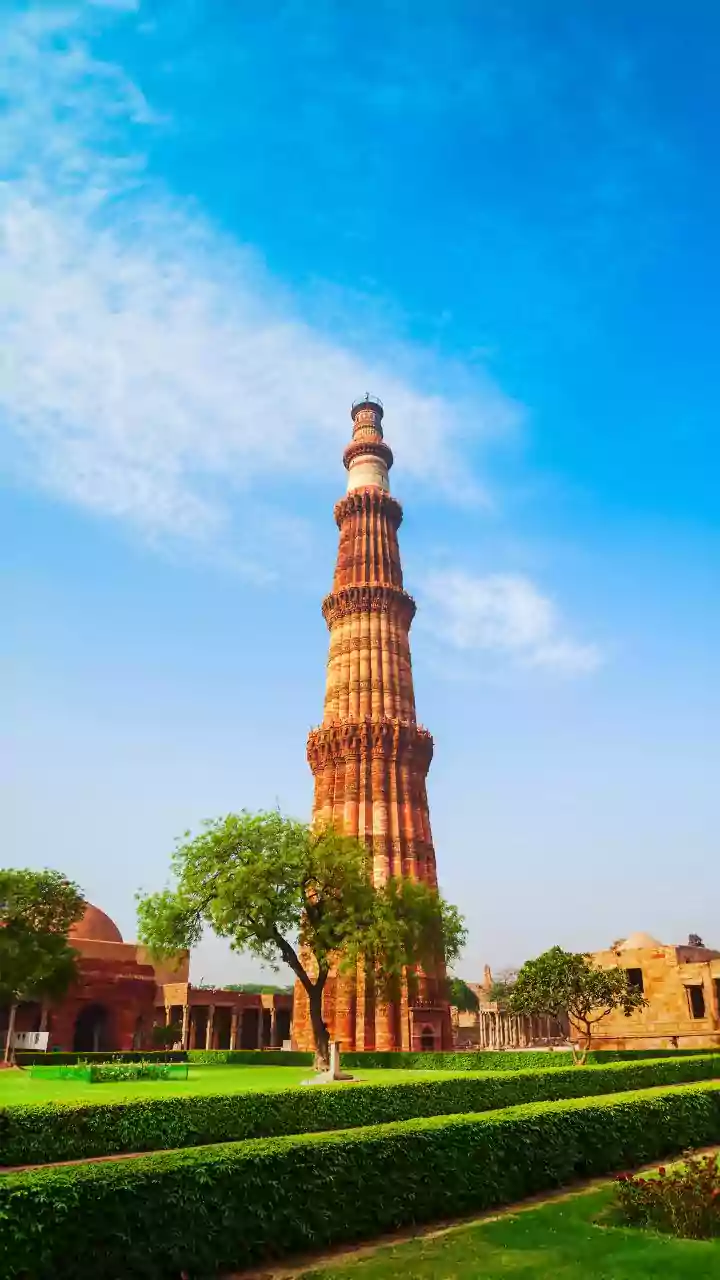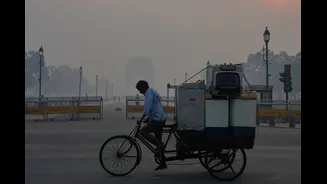Delhi-NCR’s deteriorating air quality has again led to a public health emergency, with hospitals in the region reporting a significant increase in patients suffering from respiratory distress.
Doctors in
Delhi, Noida, Gurugram, Faridabad, and Ghaziabad are seeing a surge in cases of breathlessness, chest tightness, persistent cough, and throat irritation among all age groups.
Physicians have warned that current pollution levels are exacerbating pre-existing respiratory and cardiac conditions, while even healthy individuals are developing symptoms associated with poor air quality.
A concerning trend is that patients recovering from respiratory infections are taking much longer to heal, with even healthy adults reporting prolonged cough, fatigue, and chest heaviness.POLLUTION-LINKED RESPIRATORY SPIKE
Dr Aamir Nadeem, consultant in pulmonology at Regency Hospital, Gorakhpur, has noted a sharp increase in patients complaining of breathlessness, persistent cough, chest tightness, and throat irritation, including those with asthma or COPD.
Dr Nadeem said the high amount of fine particulate matter is polluting the airways and aggravating allergies, leading to more hospital visits.
“Many young professionals are developing a condition called urban bronchitis, a pollution-linked inflammation, and that recovery periods post-infection have become longer as poor air quality is compromising lung resilience, even in healthy adults,” he said.
Similarly, Dr Ravi Shekhar Jha, director and head of pulmonology and sleep medicine at Fortis Escorts Faridabad, told News18 that outpatient departments across NCR are crowded with patients experiencing cough, chest tightness, wheezing, and persistent breathlessness. He noted a “striking reappearance of symptoms in individuals whose childhood asthma had remained dormant for years”.
“Some are even experiencing haemoptysis (bleeding in cough). The combination of high particulate matter, temperature inversion, and seasonal allergens has re-triggered airway hyper-reactivity,” Dr Jha said.
‘AIR POLLUTION AFFECTING EVEN THE HEALTHY’
Healthy adults are also present at OPDs. “Even those without a prior diagnosis are presenting with allergic rhinitis, sore throat, and unexplained fatigue linked to poor air quality,” Dr Jha said.
Dr Jha said PM2.5, the fine particulate matter that penetrates deep into the lungs, is the main culprit causing inflammation and worsening existing respiratory diseases. He reiterated, “This year, symptom onset has been quicker and recovery slower, likely due to sustained exposure and cumulative damage over time.”
Dr Arjun Khanna, head of pulmonology at Amrita Hospital, Faridabad, said air pollution is no longer just an environmental issue but a “continuous health threat”.
“Over the past few weeks, we have observed a sharp increase in patients coming in with respiratory complaints. What is worrying is that these symptoms are no longer limited to those with pre-existing conditions like asthma or COPD; even young, otherwise healthy individuals are now developing breathing difficulties after minimal exposure,” said Dr Khanna. “We are also seeing more cases of fatigue, recurring headaches, and eye irritation — signs that air pollution is affecting multiple systems of the body, not just the lungs.”
Dr Mandeep Singh Basu, director, Dr Basu Eye Care Centre, New Delhi, confirmed a noticeable increase in people experiencing redness, dryness, and irritation in the eyes.
“The fine dust and smoke particles in the air can disturb the natural tear film, making the eyes feel gritty and uncomfortable. Those who already have dry eyes, wear contact lenses, or spend long hours on screens are usually affected more severely,” Dr Basu said.
‘DANGEROUS FOR HEART AND KIDNEY PATIENTS TOO’
Dr Vikas Mittal, director of pulmonology at CK Birla Hospital in Delhi, explained that the poor AQI poses serious risks for those with pre-existing heart, lung, kidney, or liver ailments.
“Patients with weak heart function may develop heart failure, while those with COPD or asthma face frequent flare-ups,” Dr Mittal said.
He said even healthy individuals, especially children under five and elderly people above 60, are developing pneumonia, upper respiratory infections, throat and eye irritation, and fatigue when the AQI crosses 400.
WHAT CAN BE DONE?
Dr Khanna from Amrita Hospitals recommends taking preventive steps. “It’s crucial for residents to take preventive steps — avoid outdoor activity during peak hours, use masks, run indoor air purifiers, and continue regular medication if they have respiratory conditions,” he said.
Dr Mittal, meanwhile, advised avoiding early morning walks, using N99 masks, and monitoring AQI levels regularly to minimize exposure. For eye health, Dr Basu suggested a few simple habits.
“It’s advisable to rinse your eyes with clean water after being outdoors, wear protective glasses when pollution levels are high, and stay hydrated to support natural tear production,” he said.
